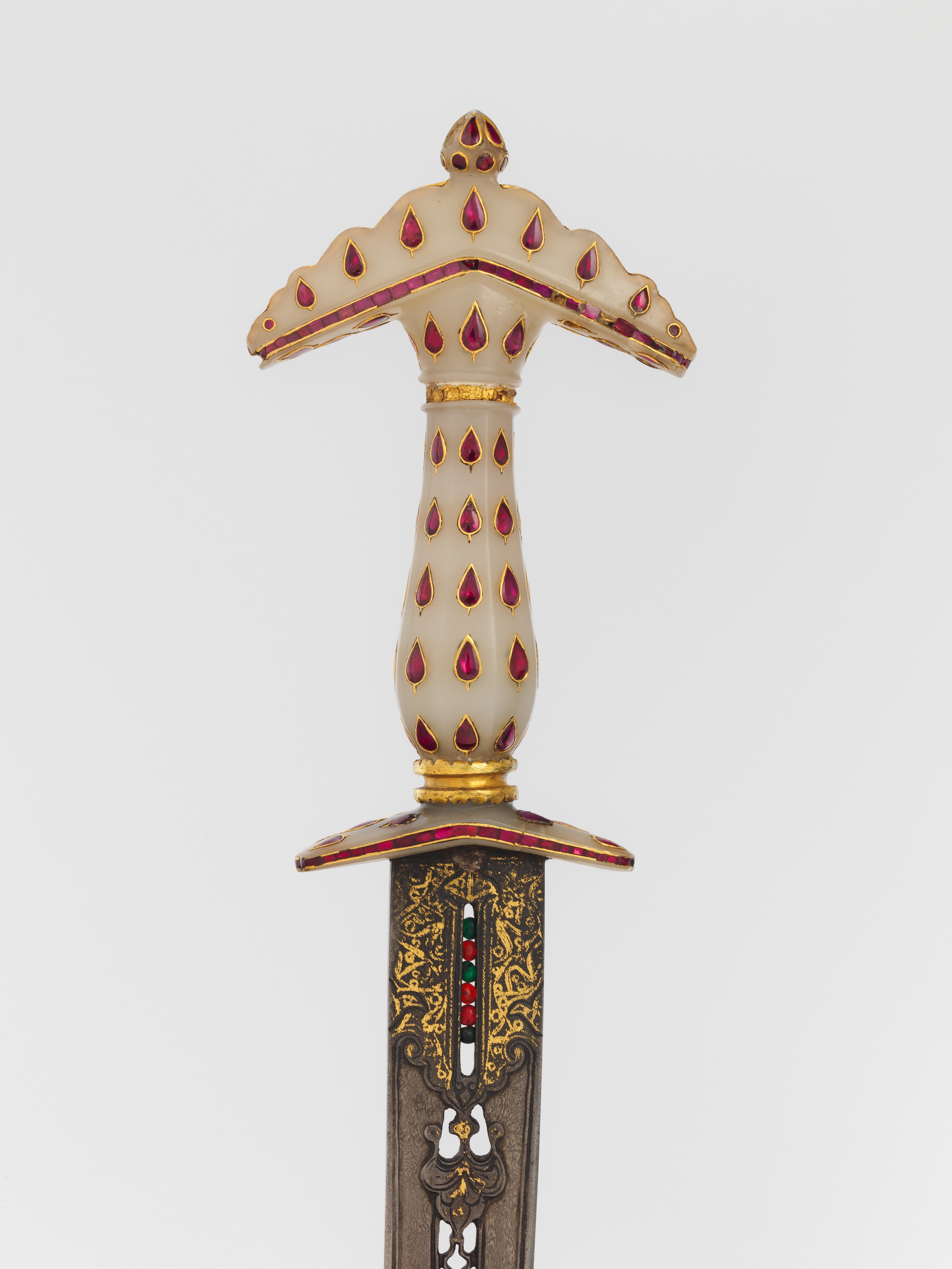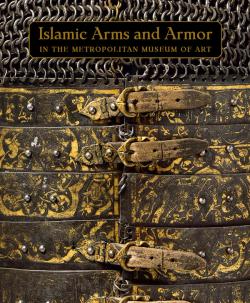Dagger with Sheath
Hilt, Indian, Mughal; blade, Turkish or Indian
From the sixteenth century on, pierced blades were popular in Turkey, Arabia, Iran, and India, and there are a number of examples in the Metropolitan Museum's collection. In several respects the blade of this dagger is similar to that of accession number 22.107a, b, dated to the eighteenth–nineteenth century, notably in the pierced leaf forms below the lobed section that contains a slot for the "rolling balls"––which here are tiny polished rubies and emeralds that were strung on a wire dropped through a hole at the top of the blade before the tang was welded on. The same feature also occurs on a late sixteenth- or early seventeenth-century Ottoman dagger in the Landesmuseum Württemberg, Stuttgart, and on another almost identical example in the Rüstkammer of the Staatliche Kunstsammlungen Dresden, all of which indicates that dagger blades in this style were probably produced over a long period of time. It is uncertain where these pierced blades––as opposed to their fittings––were crafted, whether they originated from one center of production in Iran or Turkey or whether the style was widely imitated. The blade of this dagger is embellished with a coherently executed arabesque design, which in later examples of the eighteenth to nineteenth century degenerates into disconnected floral motifs, suggesting that this more finely worked blade is probably of the seventeenth century.
Indigenous to India, daggers fitted with hilts of this type are known as chilanum and are characterized by an elongated splayed pommel and guard, sometimes chevronlike or curved to create a double crescent, usually with baluster-shaped grips; in some examples the forward quillon is curved upward to form a knuckle guard. The hilt type probably originated in the Deccan. Among the earliest representations ot the type appears in a Deccani miniature dated about 1555, which portrays Sultan Husain Nizam Shah I of Ahmadnagar (r. 1553–65) wearing a chilanum in his belt (Cincinnati Art Museum, John J. Emery Endowment, 1983.3110). Numerous examples also appear in Mughal miniatures from the time of Akbar I (r. 1556–1605), where most of the hilts appear to be of gilt metal and have globular elements in the center of the grips, but are otherwise unembellished. In the seventeenth century the daggers were often worked in nephrite and were more elaborately decorated, usually with colored gems.
The hilt of this dagger, like the blade, seems to be relatively early in date, presumably also of the seventeenth century. It is decorated with restraint and clarity, in contrast to the ovrabundance of ill-cut gems found on later hilts. As with much Indian jewelry and jeweled daggers, the hilt of this example is difficult to attribute to a particular center because there are no precisely dated parallels. It is, however, similar in construction and form (but not decoration) to a dagger in the Furusiyya Art Foundation, Vaduz, that is also consctructed in several parts and has a baluster-shaped grip that is octagonal in section (no. R-59). The Furusiyya dagger can be dated to before 1730 by comparison with a similar piece in Saint Petersburg (State Hermitage Museum, no. OR-452). In addition, there are a number of nephrite sword and dagger hilts decorated with rows of stones in kundan settings all very similar in conception to the decoration of The Met's dagger. These have recently been dated by Manuel Keene to the mid- to late seventeenth century (see Treasury of the World: Jewelled Arts of India in the Age of the Mughals. Exh. cat., British Museum, London; MMA, New York; Cleveland Museum of Art; Museum of Fine Arts, Houston; and Los Angeles County Museum of Art, 2001–2. New York: Thames and Hudson in association with The al-Sabah Collection, Dar al-Athar al-Islamiyyah, Kuwait National Museum, 2001. Catalogue by Manuel Keene with Salam Kaoukji.). Consequently, the Museum's dagger is tentatively attributed here to approximately this period.
Due to rights restrictions, this image cannot be enlarged, viewed at full screen, or downloaded.
This artwork is meant to be viewed from right to left. Scroll left to view more.




